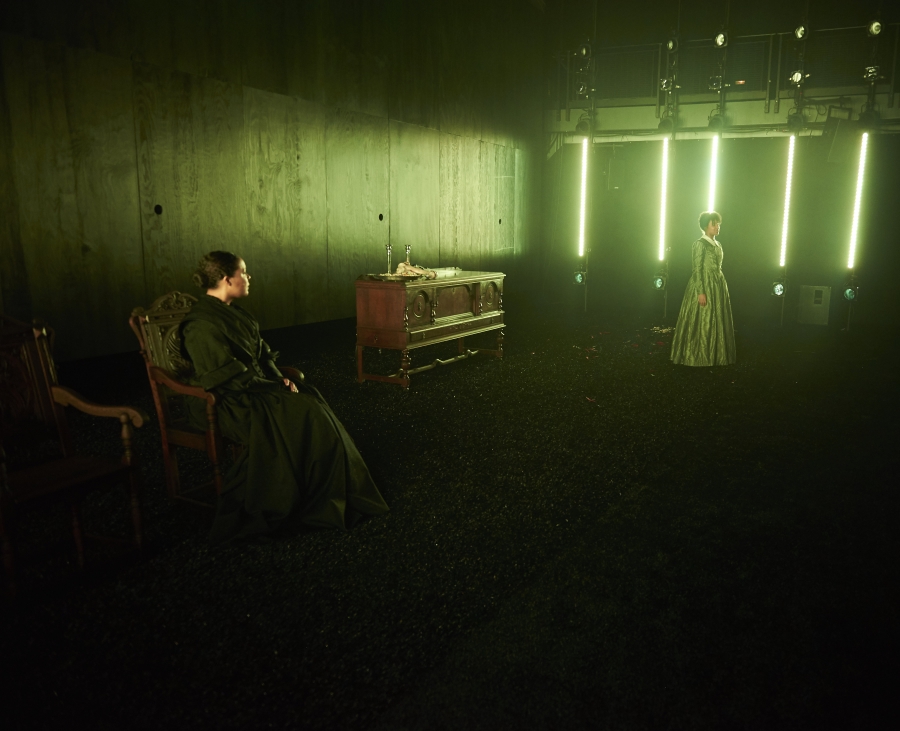A friend of mine, an actor and professor of theatre at a prestigious arts school, lent me the most recent edition of your magazine and suggested I read The Moors (July/Aug. ’17). I read both the interview article and the play, but before I had finished with the playwright’s comments on scene and casting, I noticed that while playwright Jen Silverman says that the casting is “best when very diverse,” the photographs accompanying the script show an all-white cast.
That’s a very specific and clear note from the playwright. Searching your website I discovered that one photograph is the same one you used in a 2016 article about The Moors. My criticism is not about the laziness of grabbing a photo from the files without much analysis. I would have thought that in its premiere production, Yale Repertory Theatre, should have honored the playwright’s request for diversity; and if not Yale, then your magazine might have chosen a picture of a production that did.
Both Yale and American Theatre magazine missed a very important opportunity to honor a playwright’s sensitivity to casting actors of color. This is especially poignant in a time when actors of color have been very vocal about their roles in film and theatre.
Perhaps you might better attend to such details in the future.
Brad Stocker
Retired professor, Miami Dade College
Jen Silverman responds:
The Yale Rep production of The Moors was the play’s premiere, and as such was my first opportunity to develop it fully and see it on its feet. Working on this production, it became clear to me that The Moors is not really an adaptation of the Brontë canon nor tied in any literal way to that period—rather, it is a sharply contemporary play about isolation, desire, loneliness, and the attempts we make to be seen. As such, it cannot be universal if the cast is all white.
But this is the importance of first productions that (with luck) become second and third productions—a first production is a chance to learn, not to get everything right the first time. I love the actors we cast, and it is unrelated to their immense talent and ability when I say that part of what I learned was that I, personally, had not put color-conscious casting at the forefront of this process—and that the play itself takes on more layers, speaks to contemporary society more clearly, and is more relevant when you do so. After having this realization, I added the casting note to the front of the script.
Yale Rep did everything they could to support the draft I came in with. They didn’t at any point ignore or disrespect my wishes. When I asked for certain actors with whom I had long and ongoing collaborations, they honored those requests. I was so focused on assembling individual collaborators that I lost sight of a larger picture. The second production at the Playwrights Realm [photos of which appear with the script in the magazine, along with the Yale Rep shots] put these realizations to good use, and I’m grateful to both institutions and to both casts for helping me learn, in numerous and different ways, what this play requires, and how important color-conscious casting is for my work as a whole.





